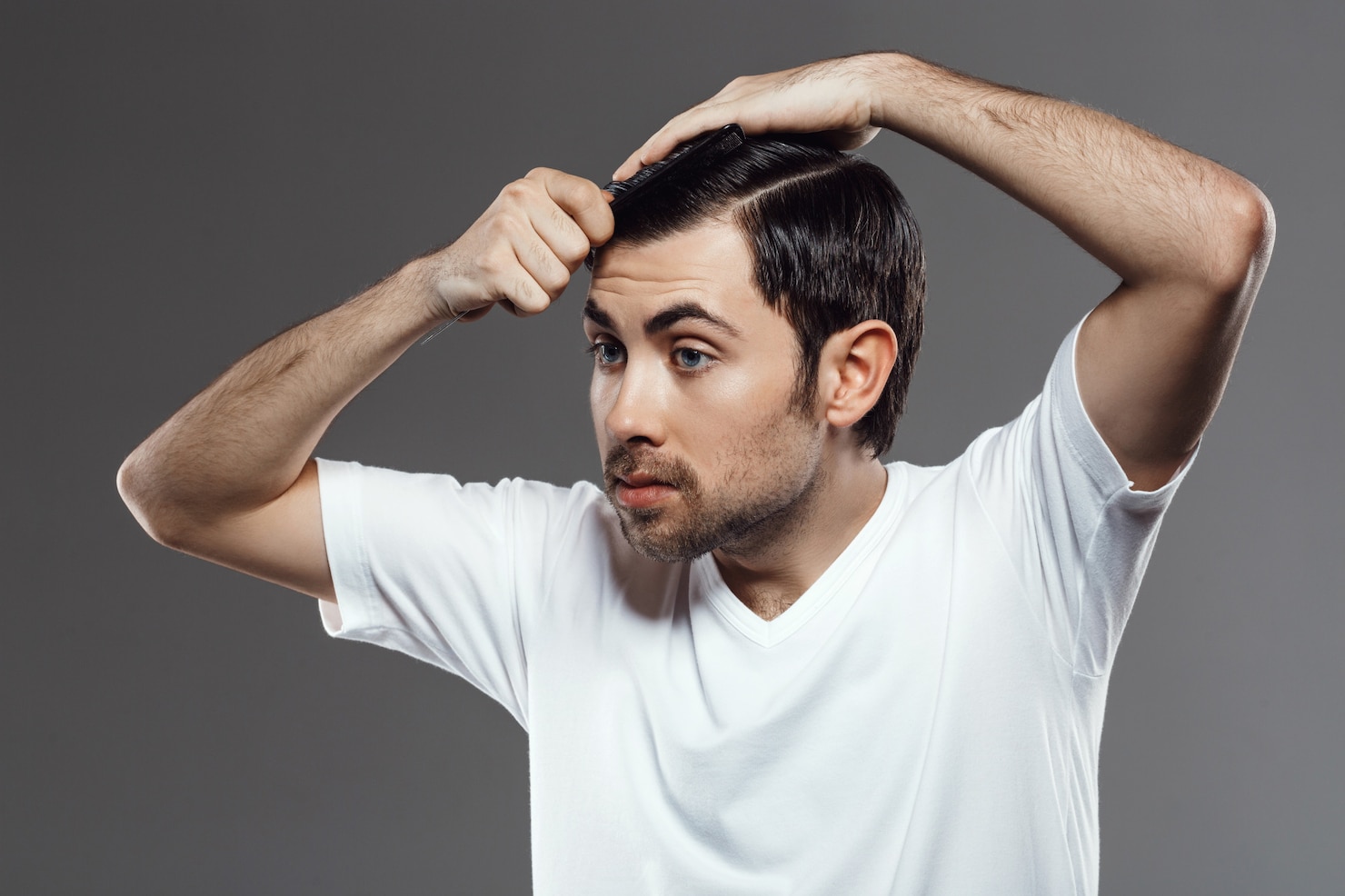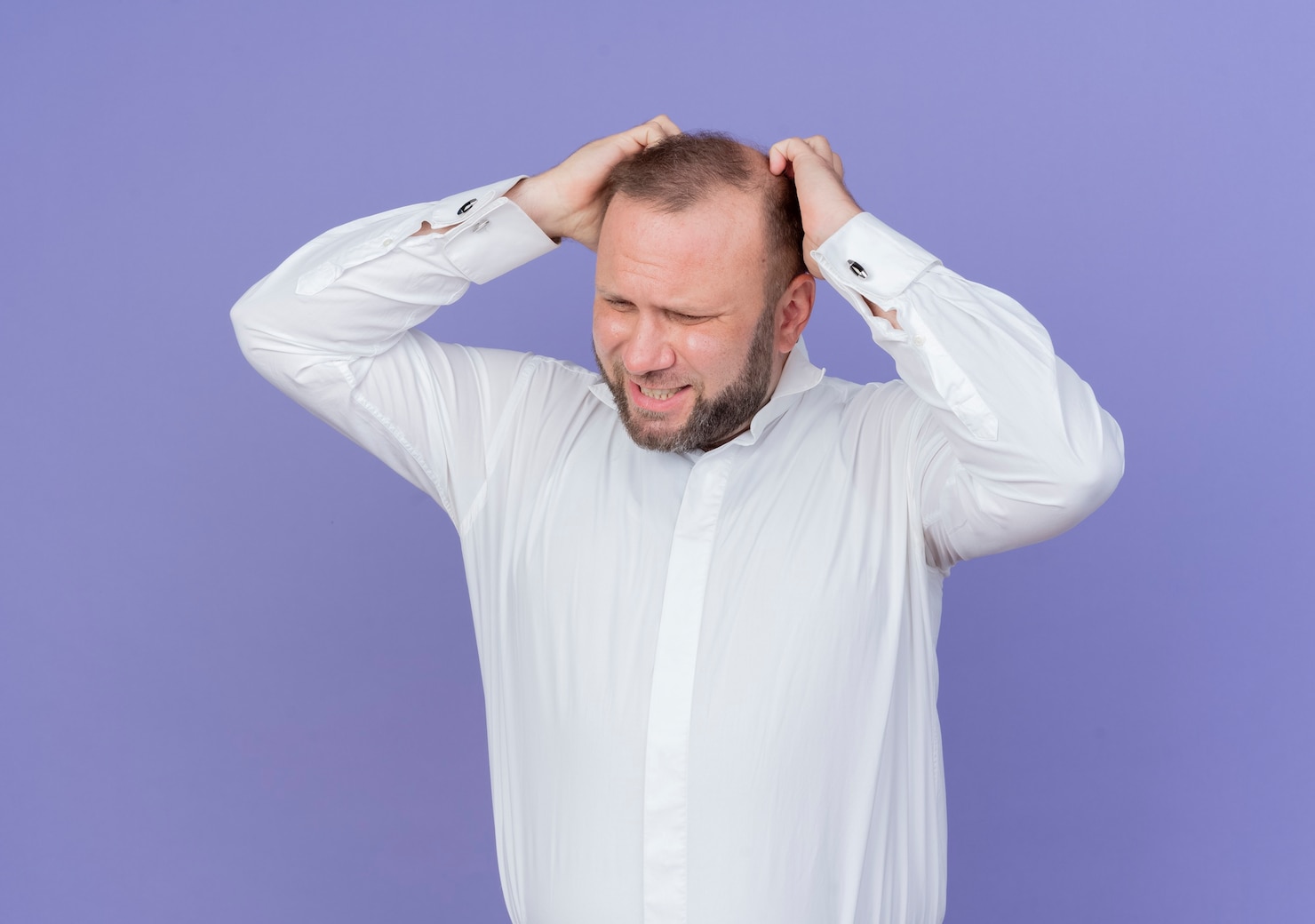
Have you noticed your hair becoming brittle, thinning, or experiencing excessive shedding? Hair breakage is a common issue that can affect men's hair health and appearance. With that, it’s not hard to see why there are increasing searches for terms such as “what does hair breakage look like?” “how to stop hair breakage naturally?” “new hair growth or breakage” and “cause hair breakage.”
In this blog post, we will delve into the topic of hair breakage, exploring its signs, causes, and most importantly, how to prevent and treat it. By understanding the science behind hair breakage and implementing effective hair care practices, you no longer need to waste hours online looking up terms like “how to stop hair breakage naturally,” “new hair growth or breakage,” and “cause hair breakage for answers.”
Introduction to Hair Breakage
Hair breakage is a common concern that affects many individuals. Understanding the importance of hair care and recognizing the impact of hair breakage on men's hair are essential steps toward maintaining healthy and vibrant locks.
Understanding the Importance of Hair Care
Hair care plays a pivotal role in promoting strong and resilient hair. It involves adopting a comprehensive routine that encompasses cleansing, conditioning, and protective measures. Proper hair care helps nourish the hair follicles, strengthen the strands, and prevent breakage.
Regular cleansing is crucial for removing dirt, excess oils, and product buildup that can weigh down the hair and weaken its structure. Conditioning, on the other hand, replenishes moisture, restores elasticity, and enhances the overall health of the hair. Additionally, incorporating protective measures such as minimizing heat-styling, avoiding harsh chemical treatments, and using suitable hair accessories can significantly reduce the risk of breakage.
The Impact of Hair Breakage on Men's Hair
Hair breakage can have a substantial impact on men's hair, affecting its appearance and overall health. Breakage leads to the formation of split ends, which not only make the hair look dull and frizzy but also impede its growth. Moreover, broken strands can give a thinner and less voluminous appearance to the hair, diminishing its fullness and density.
In addition to aesthetics, hair breakage can also cause discomfort and irritation. Broken hair often feels rough and can cause itching or irritation on the scalp. This can be particularly bothersome for individuals with sensitive skin or underlying scalp conditions.
It is essential for men to be aware of the impact of hair breakage and take proactive measures to prevent it. By adopting a proper hair care routine, using gentle products suitable for their hair type, and avoiding damaging practices, men can maintain strong and healthy hair.
Key Takeaway:
Understanding the importance of hair care and recognizing the impact of hair breakage on men's hair is vital for maintaining healthy and vibrant locks. Adopting a comprehensive hair care routine and taking preventative measures can help minimize breakage, promote hair health, and enhance overall appearance.Causes of Hair Breakage
Hair breakage can occur due to various factors, including environmental influences and styling practices. Understanding these causes is essential to prevent and address the issue effectively.
Environmental Factors
Exposure to Sun and UV Radiation:
Prolonged exposure to the sun's harmful rays and UV radiation can damage the hair's outer protective layer, leading to dryness, brittleness, and breakage. UV rays penetrate the hair shaft, causing structural damage and weakening its integrity.Harsh Weather Conditions:
Extreme weather conditions, such as excessive heat, cold, wind, and humidity, can take a toll on your hair. These factors can strip the hair of its natural moisture, making it more prone to breakage. Additionally, harsh weather can make the hair more vulnerable to damage from other causes, exacerbating the problem.Styling and Maintenance Practices
Excessive Heat-Styling:
Frequent use of heat-styling tools like flat irons, curling irons, and blow dryers can cause hair breakage. High temperatures from these tools can deplete the hair's moisture, weaken the protein structure, and make it susceptible to breakage. It's important to use heat protectant sprays and minimize heat exposure to protect your hair.Improper Hair Care Routine:
Neglecting proper hair care practices, such as infrequent washing, harsh brushing, and using the wrong hair products, can contribute to hair breakage. Overwashing or using harsh shampoos can strip the hair of its natural oils, leading to dryness and breakage. Additionally, aggressive brushing or using brushes with sharp bristles can cause mechanical damage, resulting in breakage.Key Takeaway:
Hair breakage can be caused by environmental factors, such as sun exposure and harsh weather conditions, as well as styling practices, like excessive heat-styling and improper hair care routines. By being mindful of these causes, you can make informed choices to prevent hair breakage and promote healthier hair.Recognizing the Signs of Hair Breakage

Image Source: FreePik
To effectively address hair breakage, it's crucial to recognize the signs indicating its presence. By paying attention to both visible and tactile indicators, you can identify hair breakage early on and take appropriate measures to prevent further damage. So, what does hair breakage look like?
Visible Signs
One of the prominent visible signs of hair breakage is the presence of split ends. Split ends occur when the hair shaft becomes frayed and splits into two or more strands. You may notice the ends of your hair appearing frayed, rough, and uneven.
Additionally, hair breakage can lead to hair thinning or loss. You may observe patches of thinner hair, a decrease in hair volume, or even bald spots in severe cases. These visible signs should prompt you to take action to restore your hair's health and prevent further breakage.
Tactile Indicators
Tactile indicators refer to the way your hair feels when touched, which can reveal valuable information about its health. One tactile indicator of hair breakage is a rough and brittle texture. If your hair feels dry, lacks smoothness, and appears easily tangled, it may be a sign of breakage. Another indicator is experiencing easy breakage or shedding. When your hair breaks off or falls out excessively during brushing, styling, or even gentle manipulation, it suggests that the hair is weak and prone to breakage.
Key Takeaway:
Recognizing the signs of hair breakage, including split ends, hair thinning or loss, rough texture, and easy breakage or shedding, allows you to take proactive measures to restore hair health and prevent further breakage. Regularly inspect your hair for these indicators to maintain strong and resilient hair strands.Preventive Measures for Hair Breakage

Image Source: FreePik
Taking preventive measures is essential to maintain the health and strength of your hair, reducing the risk of breakage. By adopting a proper hair care routine and implementing protective hairstyles and techniques, you can significantly minimize the occurrence of hair breakage.
Proper Hair Care Routine
A gentle hair care routine forms the foundation for preventing hair breakage. Start with gentle shampooing and conditioning. Choose sulfate-free shampoos and conditioners that are specifically formulated to nourish and strengthen the hair. Avoid excessive scrubbing or tangling the hair while shampooing, as it can lead to breakage. Instead, massage the scalp gently with your fingertips and let the lather rinse down the length of the hair.
Regular trimming is crucial to prevent split ends, which can contribute to hair breakage. Schedule regular visits to your hairstylist to trim away any damaged or split ends. This helps to maintain the overall health and integrity of your hair strands.
Protective Hairstyles and Techniques
Protective hairstyles and techniques play a vital role in safeguarding your hair from external damage. Avoid tight hairstyles that pull on the hair, such as tight ponytails, braids, or buns. Excessive tension on the hair follicles can weaken them, leading to breakage over time. Opt for looser hairstyles that allow your hair to move and breathe freely.
Minimizing heat-styling is crucial in preventing hair breakage. Heat can strip the hair of its natural moisture, causing it to become dry and brittle. Whenever possible, allow your hair to air dry instead of using heat tools. If you must use heat-styling tools, apply a heat protectant spray beforehand and use the lowest heat setting necessary.
Key Takeaway:
Preventing hair breakage involves adopting a proper hair care routine, including gentle shampooing and conditioning, regular trimming to prevent split ends, and implementing protective hairstyles and techniques. By incorporating these preventive measures into your hair care routine, you can keep your hair healthy and minimize the risk of breakage.Conclusion
Understanding the signs of hair breakage is crucial for maintaining healthy and vibrant locks. By recognizing the visible signs of split ends, hair thinning or loss, and paying attention to tactile indicators such as rough texture and easy breakage or shedding, you can take proactive steps to prevent further damage and restore hair health.

